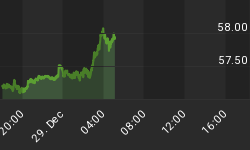Most readers will be familiar with the great hyperinflation of Weimar Germany. Indeed, it is often held up as the icon of what can go drastically wrong when government throws off all restraint as regards to the production of fiat money. I do not need to labour the point much as to how billions and then trillions of marks were literally not worth the paper they were printed on and how workers had to be paid by the hour lest their wages rapidly lost purchasing power in the brief time between being paid and spending that same money.

As ever, gold and silver proved to be safe havens from the ravages of inflation. Indeed, anything other than the mark seemed to a good place to park one's wealth. In those days, that could be anything from bedpans to US dollars to precious metals. However, depending on one's accumulated wealth, gold and silver were amongst the top assets in terms of holding and transporting wealth. Despite this, one set of figures and one notable week in the life of Weimar Germany demonstrated that one particular form of wealth proved to be in particularly heavy demand.
Thanks to an article by Rob Kirby that listed the increasing value of gold and silver in terms of German marks, I was able to plot a couple of graphs. The chart of the price of silver and gold over the period from January 1919 to November 1923 shows the rapidly deteriorating value of the Mark. For those having trouble counting the zeroes, gold went from 170 marks per ounce in 1919 to 87 trillion marks per ounce about five years later.

Likewise silver went from 12 marks to nearly 544 billion marks per ounce. The next step was to see how the gold-silver ratio performed over this period and that is where the surprise came as we can see below. For practically all of that five-year period, gold and silver faithfully followed the historic range between 14.17 and 16.10 with one temporary blip to 27 in September 1921. But, lo and behold, the ratio leapt to 160 on the week beginning October 23rd 1923 and stayed there till our price record ends on November 30th 1923!
What was going on here? Was there an error in the gold price data? Perhaps an extra zero had been accidentally introduced thus skewing the numbers. I queried Rob Kirby on this but we both agreed that the numbers were correct.

This left an obvious mystery, why would gold suddenly become ten times more expensive than silver in very short measure? The only clue was to look at the timeline of Weimar Germany during 1923 and the truth became quickly evident. The timeline below is taken from Wikipedia (see link)
October 6, 1923 Dr. Gustav Stresemann (People's) forms 2nd cabinet
October 20, 1923 General Alfred Mueller marches on Saxony to prevent a communist takeover. Also:
General Otto von Lossow in Bavaria is relieved of command by Berlin; he refuses.
October 23, 1923 Communist takeover of Hamburg
October 25, 1923 Hamburg uprising suppressed
November 8, 1923 Beer Hall Putsch
November 9, 1923 Beer Hall Putsch quelled.
November 12, 1923 Dr. Hjalmar Horace Greeley Schacht was named "Reichswaehrungskommissar".
November 15, 1923 Rentenmark issued; pegged to the Gold Standard; Rentenmark 4.2 = 1 US dollar; at this time:
Old Reichsmark 4,200,000,000 = 1 US dollar
On October 23rd, the communists began an uprising in Hamburg. With memories of the Bolshevik Revolution of 1917 still fresh in the memories of Germans, this must have set alarms bells furiously ringing. Was Weimar Germany about to go the way of Tsarist Russia? The message racing through the minds of many a panicked German must have been "Get out of here!" and spare no expense in doing so!
Tales of mass executions and the often violent expropriation of wealth by Lenin and his cohorts surely would have focused the minds of wealthy Germans on getting their wealth changed into a form that was easily transportable and that could only mean gold. With an equivalent amount of silver weighing about sixteen times as much, it seems quite apparent that demand for gold skyrocketed whilst other forms of tangible but more cumbersome wealth were traded in for gold to the extent that people were prepared to give up 90% of their assets to accommodate this dectupling of the gold price. It must have been a desperate frame of mind that bid gold up to such feverish prices.
As it happened, less fraught people who traded one ounce of gold for 160 ounces of silver probably made a killing as the Germany nation finally stabilized into some semblance of normality. One wonders how such trading in gold and silver fared as another form of socialism - National Socialism - began to cast its shadow across the land. Doubtless, that is a tale for another time.
Roland Watson is the author of the "Silver Spike Report" and the "Gold Price Survey Report" which respectively analyze the technical and fundamental data from the 1979-80 silver spike and what 17 gold experts have been ultimately projecting for the price of gold. These can be purchased at the website www.newerainvestor.com.
He also writes the investment newsletter The New Era Investor that can be purchased for an annual subscription of $99. To view a sample copy of the newsletter, please go to www.newerainvestor.com and click on the "View Sample Issue Here" link to the right.
Comments are invited by emailing the author at newerainvestor@yahoo.co.uk.
















